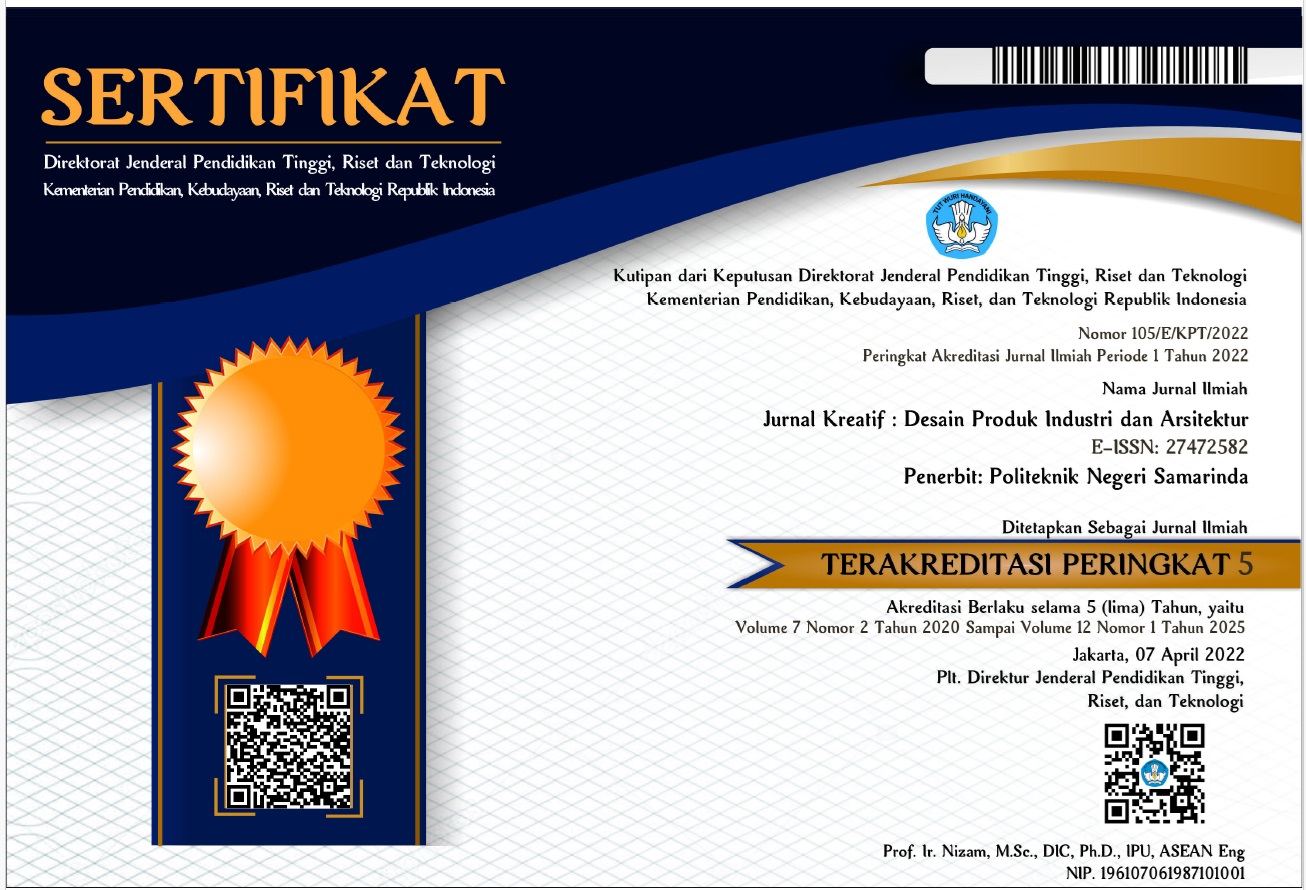PEMANFAATAN HUTAN KOTA SEBAGAI BENTUK RUANG TERBUKA HIJAU DALAM MENDUKUNG FUNGSI PERLINDUNGAN LINGKUNGAN
 Abstract views: 693
,
Abstract views: 693
,
 pdf downloads: 2234
pdf downloads: 2234
Abstract
As the area of the city that became the capital of a province, the province of East Kalimantan,
and the natural resources abundant enough, the investment climate in the city of Samarinda
show progress very quickly, and became one of the main targets for investors to develop the
business. Some sectors of life are rising because of increasing population is transportation
and recreation needs. Transport in a fairly densely populated cities, where the population
is about 726 233 Samarinda souls (2010 census results), will certainly have an impact on
congestion and pollution. With the solution propagate green open space (in the form of
Forest City), where the latter planted trees are trees that can absorb chemicals and toxins
that are produced from such pollution. Besides urban forests can also serve as a recreational
area for the community, and as an area to perform other activities that positively. General
conclusion is that the government of Samarinda should provide more open areas of green
open space in the form (Forest City) in each sub-region, so that the activity is not
concentrated only in the Mahakam River Edge only, but can be broken down into several
areas, which of course will also reduce the risk of congestion in the city.
Sebagai daerah kota yang menjadi ibukota dari sebuah propinsi, yaitu Propinsi Kalimantan
Timur, dan dengan sumberdaya alam yang cukup berlimpah, maka iklim investasi di Kota
Samarinda menunjukkan kemajuan yang sangat cepat, dan menjadi salah satu target utama
bagi investor untuk mengembangkan usaha. Beberapa sektor kehidupan yang meningkat
karena jumlah penduduk meningkat adalah transportasi dan kebutuhan rekreasi.
Transportasi di kota yang cukup padat penduduknya, dimana penduduk Kota Samarinda
adalah sekitar 726.233 jiwa (hasil sensus 2010), tentunya akan berdampak pada kemacetan
dan polusi. Dengan adanya solusi memperbanyak Ruang Terbuka Hijau (dalam bentuk
Hutan Kota), dimana nantinya pohon-pohon yang ditanam adalah pohon yang dapat
menyerap unsur-unsur kimia yang bersifat racun yang dihasilkan dari polusi tersebut.
Selain itu hutan kota dapat juga berfungsi sebagai area untuk rekreasi masyarakat, dan
sebagai area untuk melakukan aktivitas-aktivitas lain yang positif. Kesimpulan secara
umum adalah pemerintah Kota Samarinda harus menyediakan lebih banyak lagi areaarea
terbuka berbentuk Ruang Terbuka Hijau (Hutan Kota) di setiap wilayah kecamatan,
sehingga aktivitas masyarakat tidak terpusat hanya di Tepian Sungai Mahakam saja, tetapi
dapat dipecah ke beberapa wilayah, yang tentunya juga akan mengurangi resiko kemacetan
di dalam kota.
Downloads
References
Anonim. 2002. Peraturan Pemerintah Republik Indonesia No. 63 tahun 2002.
Shirvani, H. 1996. The Urban Design Process. VNR Company inc. New York.
Sudrajad, A. 2006. Pencemaran Udara, Suatu Pendahuluan. (2 Desember 2012 dari:
http//kamase_ugm@yahoo.co.id)
http://Ari Sudewa in Geografi, Kimia Terapan, Makhluk Hidup, Sekedar Info, Sosial and tagged with
debu, hutan, karbon dioksida, kota, oksigen, pohon, rekreasi, timbal, udara (20 Desember
2011)
http://gogrenindonesia.blogspot.com
http://Strano66.blogspot.com (16 Maret 2012)
Authors who publish with this journal agree to the following terms:
- Copyright on any article is retained by the author(s).
- The author grants the journal, right of first publication with the work simultaneously licensed under a Creative Commons Attribution License that allows others to share the work with an acknowledgment of the work’s authorship and initial publication in this journal.
- Authors are able to enter into separate, additional contractual arrangements for the non-exclusive distribution of the journal’s published version of the work (e.g., post it to an institutional repository or publish it in a book), with an acknowledgment of its initial publication in this journal.
- Authors are permitted and encouraged to post their work online (e.g., in institutional repositories or on their website) prior to and during the submission process, as it can lead to productive exchanges, as well as earlier and greater citation of published work.
- The article and any associated published material is distributed under the Creative Commons Attribution-ShareAlike 4.0 International License













